Community Work: The Carina Nebula
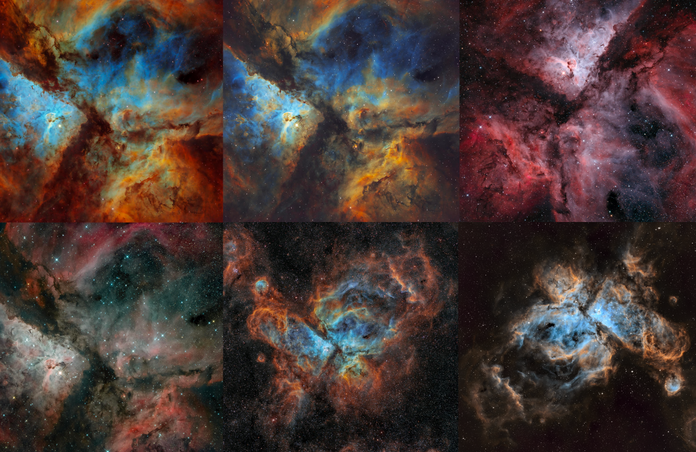
The Carina Nebula, large, complex area of bright and dark nebulosity in the constellation Carina observed and processed by Telescope Live Community
The Carina Nebula (catalogued as NGC 3372; also known as the Grand Nebula, Great Nebula in Carina, or Eta Carinae Nebula) is located in the Carina–Sagittarius Arm.
Located approximately 8,500 light-years (2,600 pc) from Earth, this emission nebula (so-called because it emits light) is one of the largest that can be observed from Earth
The Carina Nebula was discovered by the astronomer Nicolas Louis de Lacaille in 1752. He first observed it from South Africa. Since that time, the expansive nebula has been studied intensely by both ground-based and space-based telescopes. Its regions of star birth and star death are tempting targets for the Hubble Space Telescope, the Spitzer Space Telescope, the Chandra X-ray Observatory, and many others.
Carina Nebula by Scheer Jan
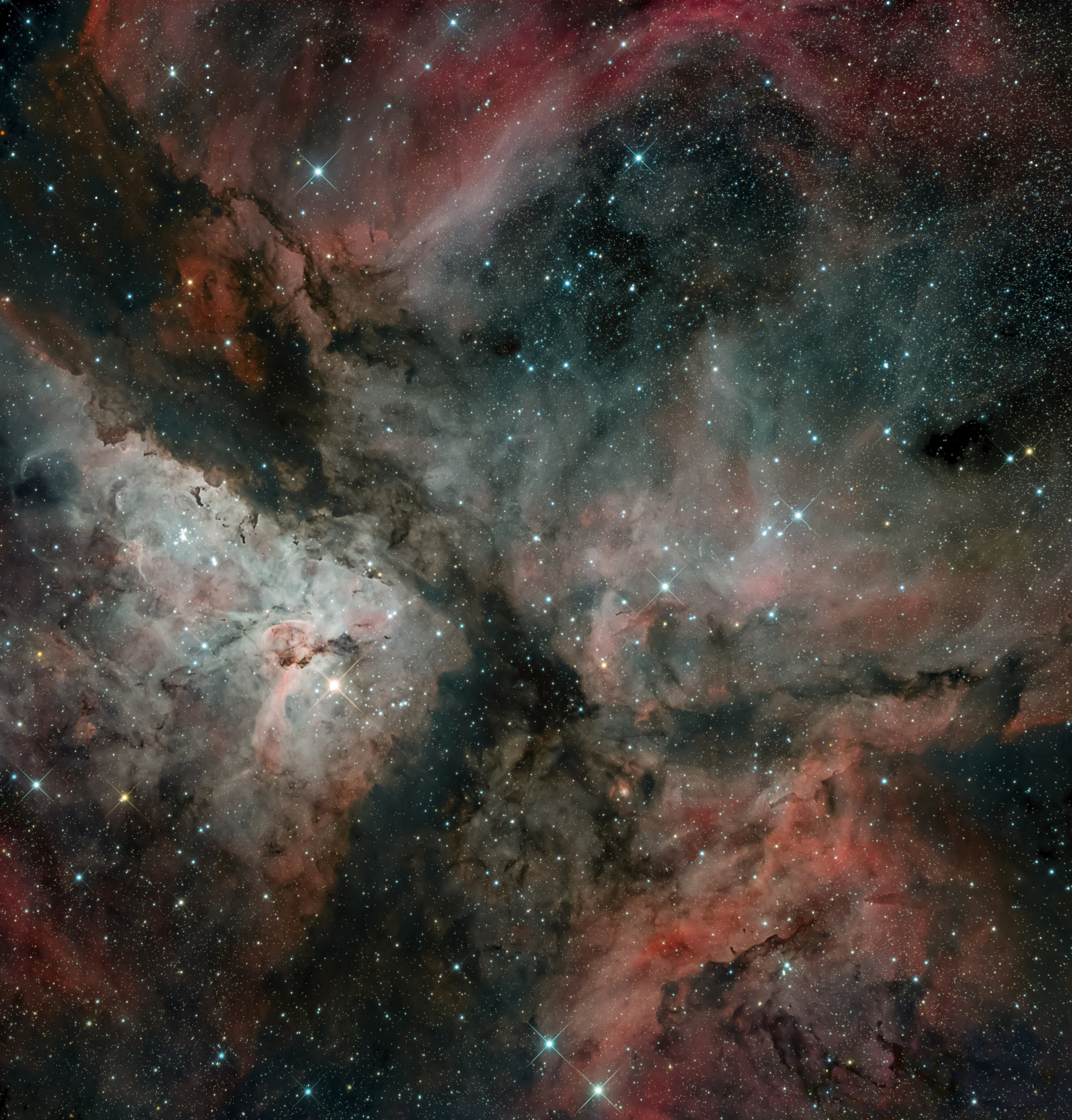
The Carina Nebula is a beautiful emission nebula in the Southern night sky. It is a large, complex area of bright & dark nebulosity. The brightest star in the center left of the image is Eta Carinae, with the Keyhole nebula visible on top of it.
Exposure time: 8 x 300s with LRGB-filters.
Telescope: CHI-2 (ASA500N, 50cm)
Filters: Astrodon LRGB
Processing: ChileAstroPixelProcessor & Photoshop CC (incl. AstroPanel 4.2 & Astronomy Tools plug-ins)
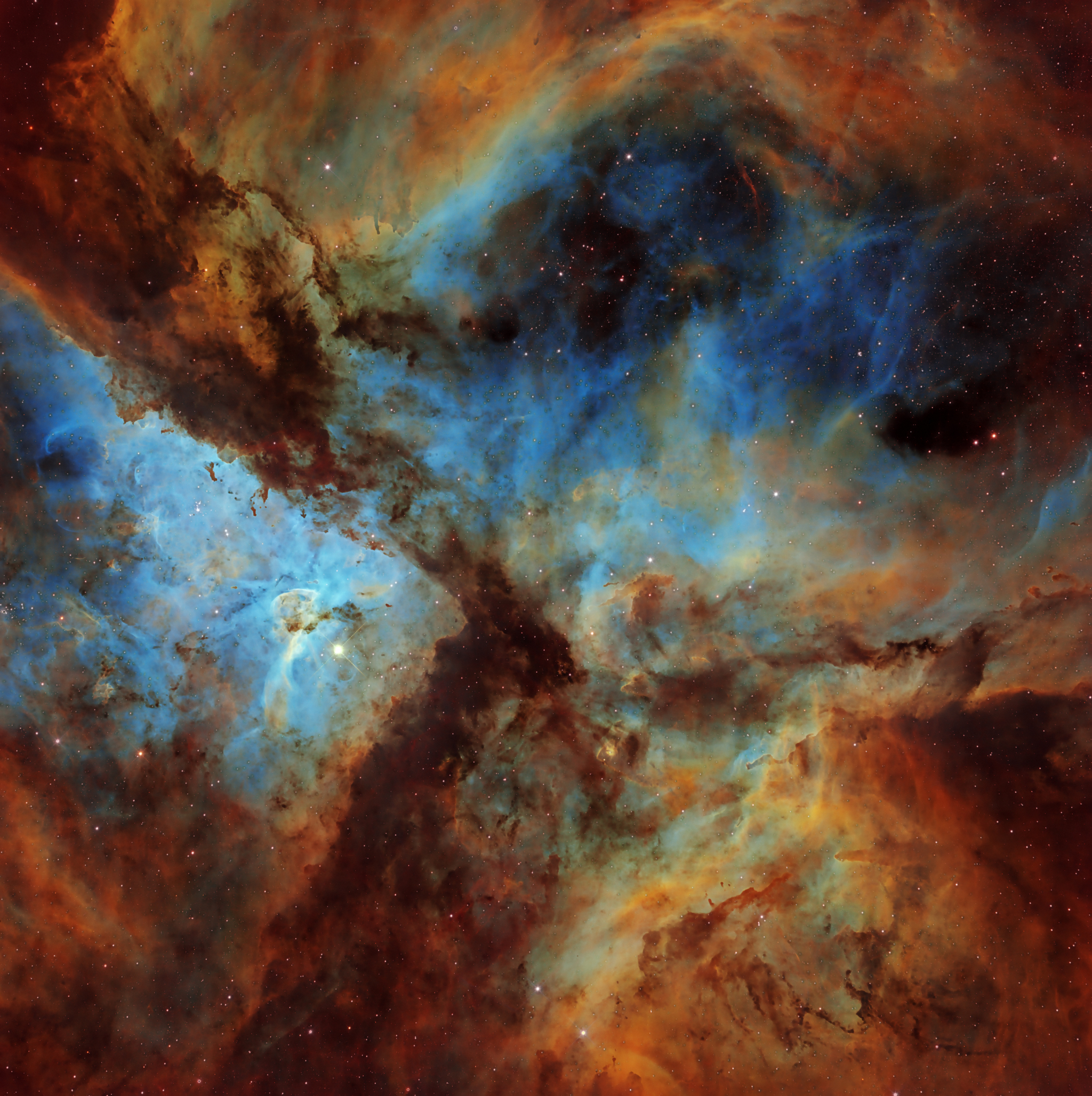
Hubble palette image (SHO) of the Carina Nebula, NGC 3372.
Exposure time 30:60:60min with SII, Ha and OIII filters.
(3 to 6 subs of 10 min with each filter, bin 1)
Filters: SHO;
Telescope: CHI-2 (ASA500N, 50cm)
Filters: SHO
Processing: AstroPixelProcessor, Photoshop CC (incl. AstroPanel 4.2 & Astronomy Tools plug-ins), Topaz Denoise
Eta Carina Nebula by Nick Szymanek
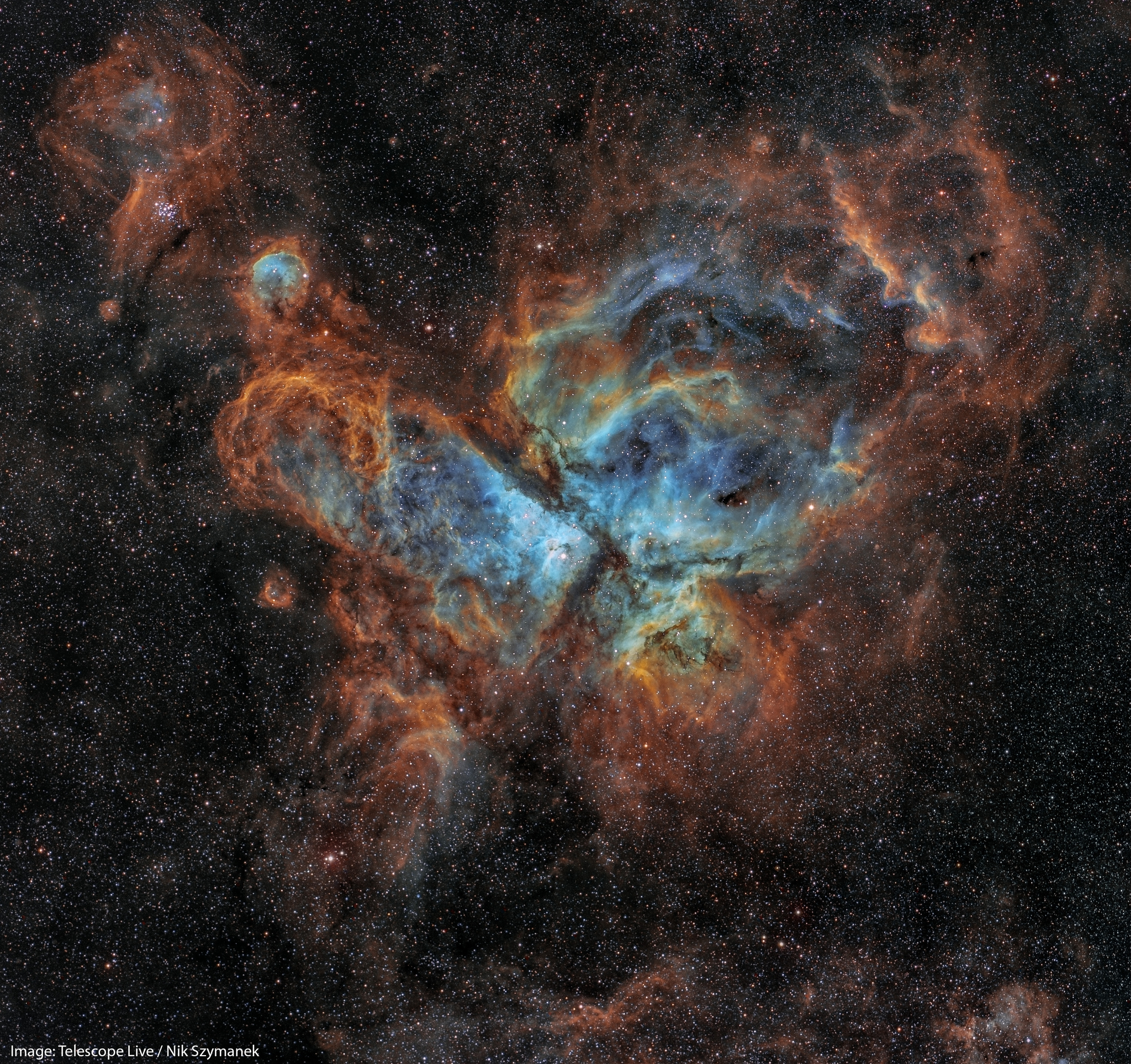
The Eta Carinae Nebula shot with narrowband filters and processed using the Hubble palette.
5 x 10-min exposures per filter.
Telescope: AUS-2 Takahashi FSQ-106
Filters: Hydrogen-alpha, Oxygen-III, Sulphur-II
Processing: Maxim DL, PixInsight, Photoshop
Eta Carina Nebula by Adam Block
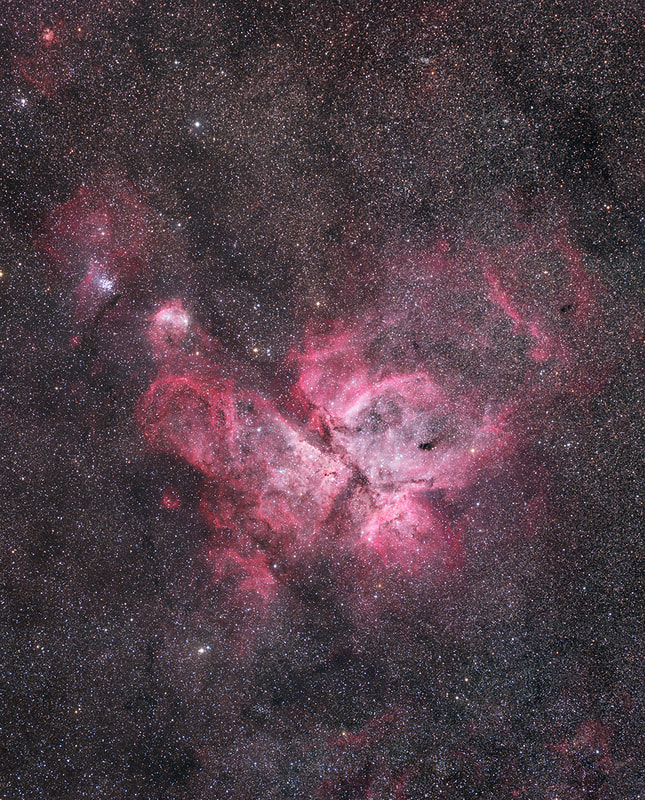
Telescope: AUS-2 Takahashi FSQ-106ED
Filters: AstroDon Gen II
Processing: PixInsight (guided tutorial here)
Eta Carina Nebula by Mohamad Yassine
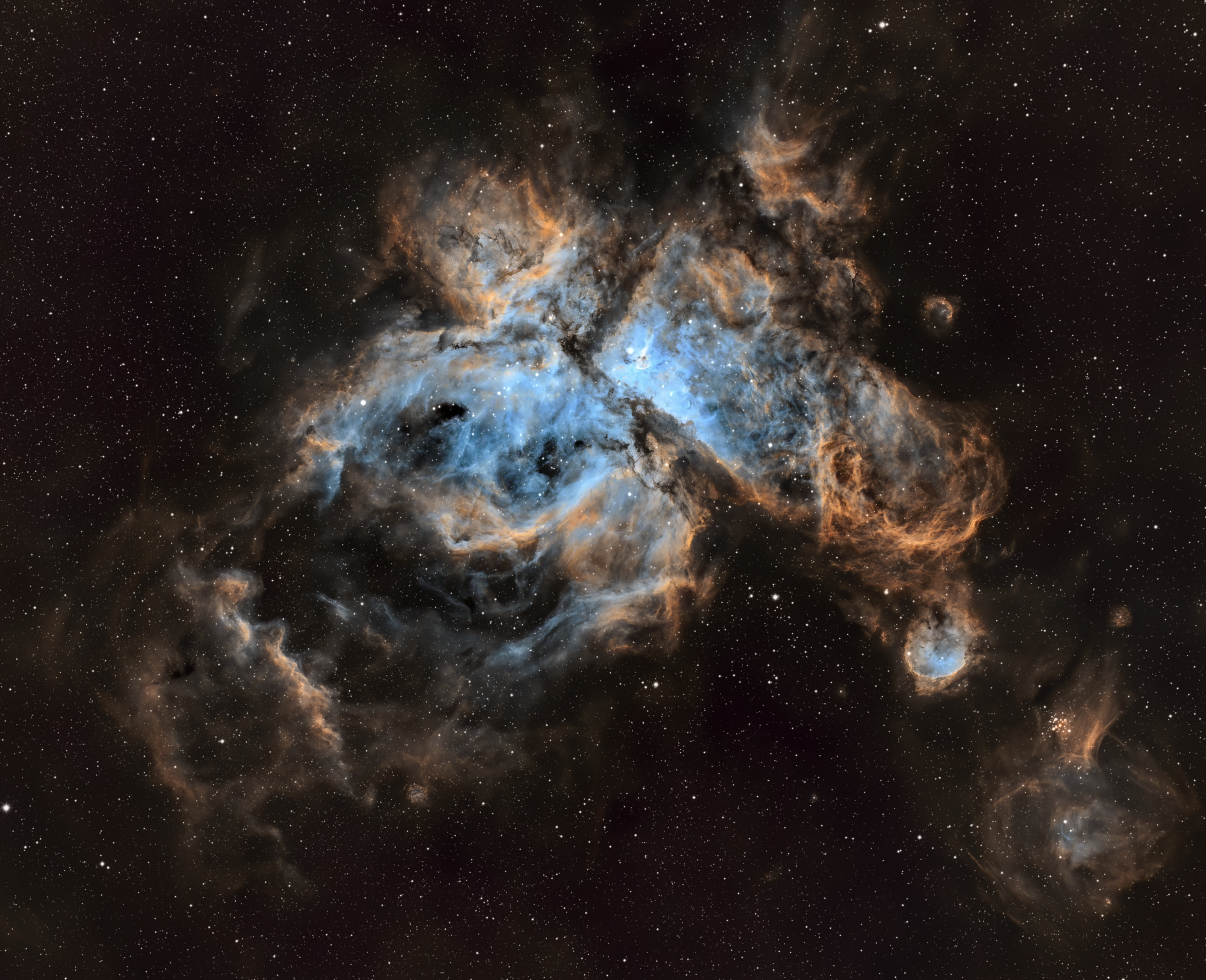
This is just 2 hours
worth of data. The Carina nebula can only be seen from the southern hemisphere
and I hope to one day get this image with my own telescope. I got some time on
AUS-2 to get this image. I guess it goes to show you the difference between taking
images from a dark sky and the city.
I used some of the newer techniques I've been developing for
reducing the stars and making sure they're not bloated and overpowering. As
well as some new tools and techniques for removing the noise and bringing out
the finer structures. In the end I don’t know it just turned amazing, you can
see the oxygen clouds floating over the hydrogen and sulfur clouds, and all the
fine details around the Gabriela Mistral nebula down in the lower right-hand
side, it almost looks like hair. This is definitely one that I will be printing.
Telescope: AUS-2 Takahashi FSQ-106ED
Filters: Astrodon SII 3nm , Astrodon OIII 3nm , Astrodon Ha 3nm
Processing: PixInsight, Photoshop CC
Carina Nebula by Peter Jenkins

The Carina Nebula NGC 3372 (sometimes known as Eta Carinae Nebula) - a large complex area of bright and dark nebulosity in the constellation Carina. It is located in the Carina–Sagittarius Arm and is approximately 8,500 light-years from Earth.
Telescope: CHI-2 ASA 500 f3.6
Filters: Astrodon 3nm Ha, OIII and SII
Processing: PixInsight and Photoshop CC
Carina Nebula by John Tipton
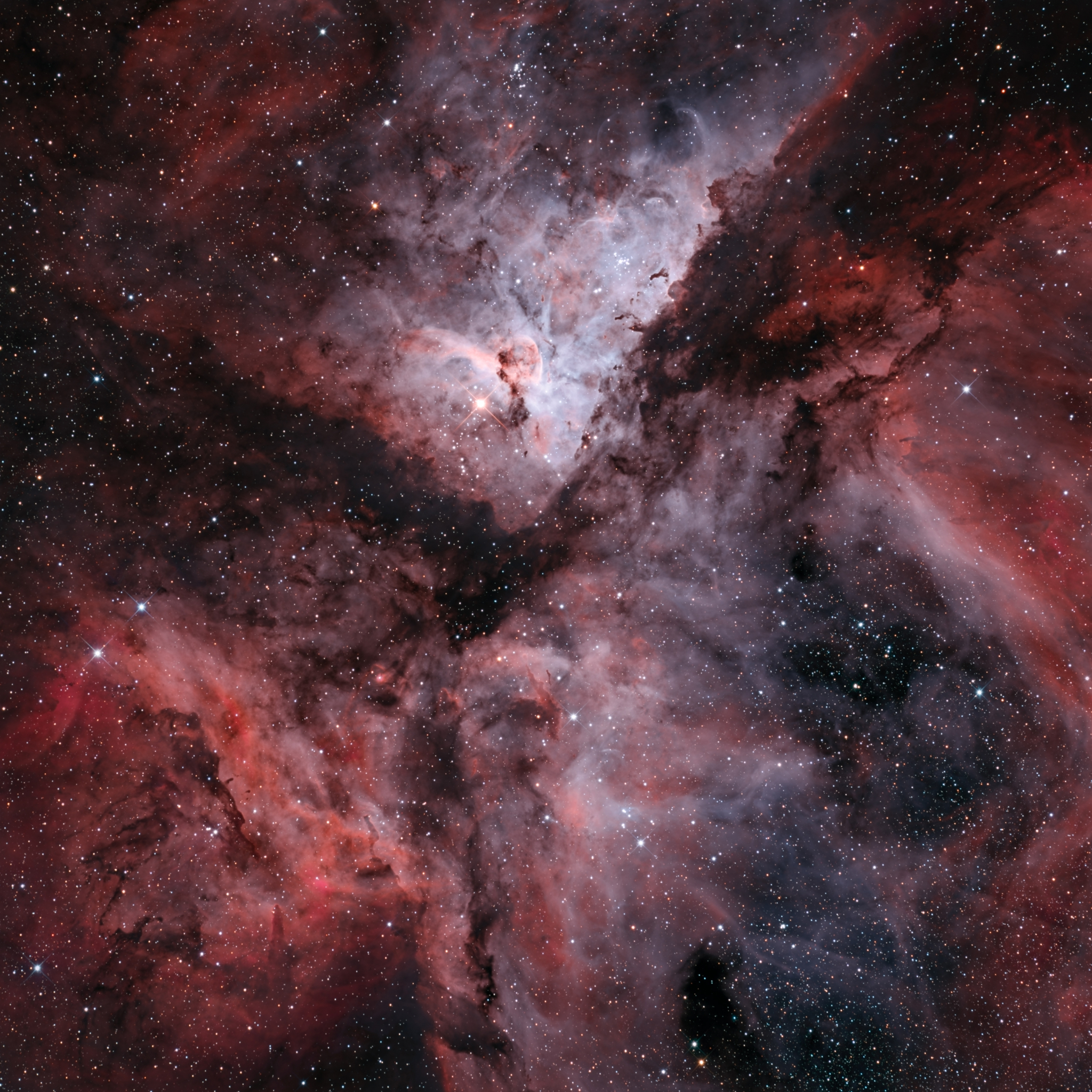
Center of NGC3372, The Carina Nebula. Image is a composite of a false color Ha-synthG-OIII and a normal color RGB image.
Telescope: ASA 500mm
Filters: Ha, OIII, R, G, B
Processing: CCDStack and Photoshop
How to Observe and Process the Carina Nebula
Observers with good-sized telescopes can spend a lot of time exploring the Trumpler clusters, the Homunculus, Eta Carinae, and the Keyhole region at the heart of the nebula.
Eta Carina: From Request Submission to Image Processing
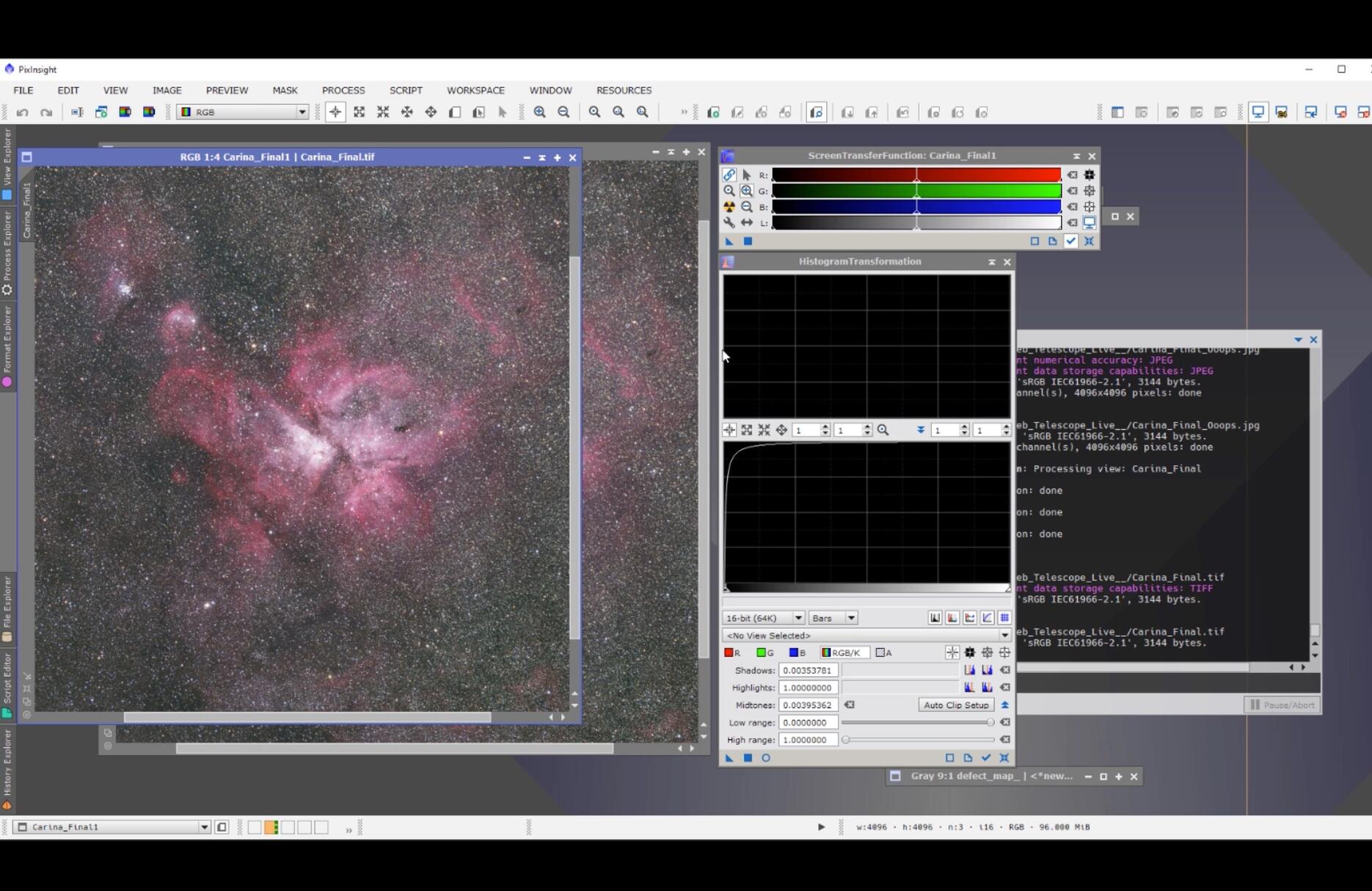
In this tutorial, astrophotographer Adam Block guides you through the workflow of creating a stunning colored wide field astrophotography picture of Eta Carina, obtained with AUS-2, a Takahashi FSQ-106. You will be guided from the initial steps of submitting a request to the Telescope Live network, to downloading and processing the images with PixInsight.
The dataset used in this tutorial can be downloaded by clicking on the link "Associated dataset" below.
by Adam Block | 6 videos | 1h 15m Level: Standard | Software used: PixInsightPlanning and Submitting the Request
Eta Carina Nebula with DeepSkyStacker & Photoshop
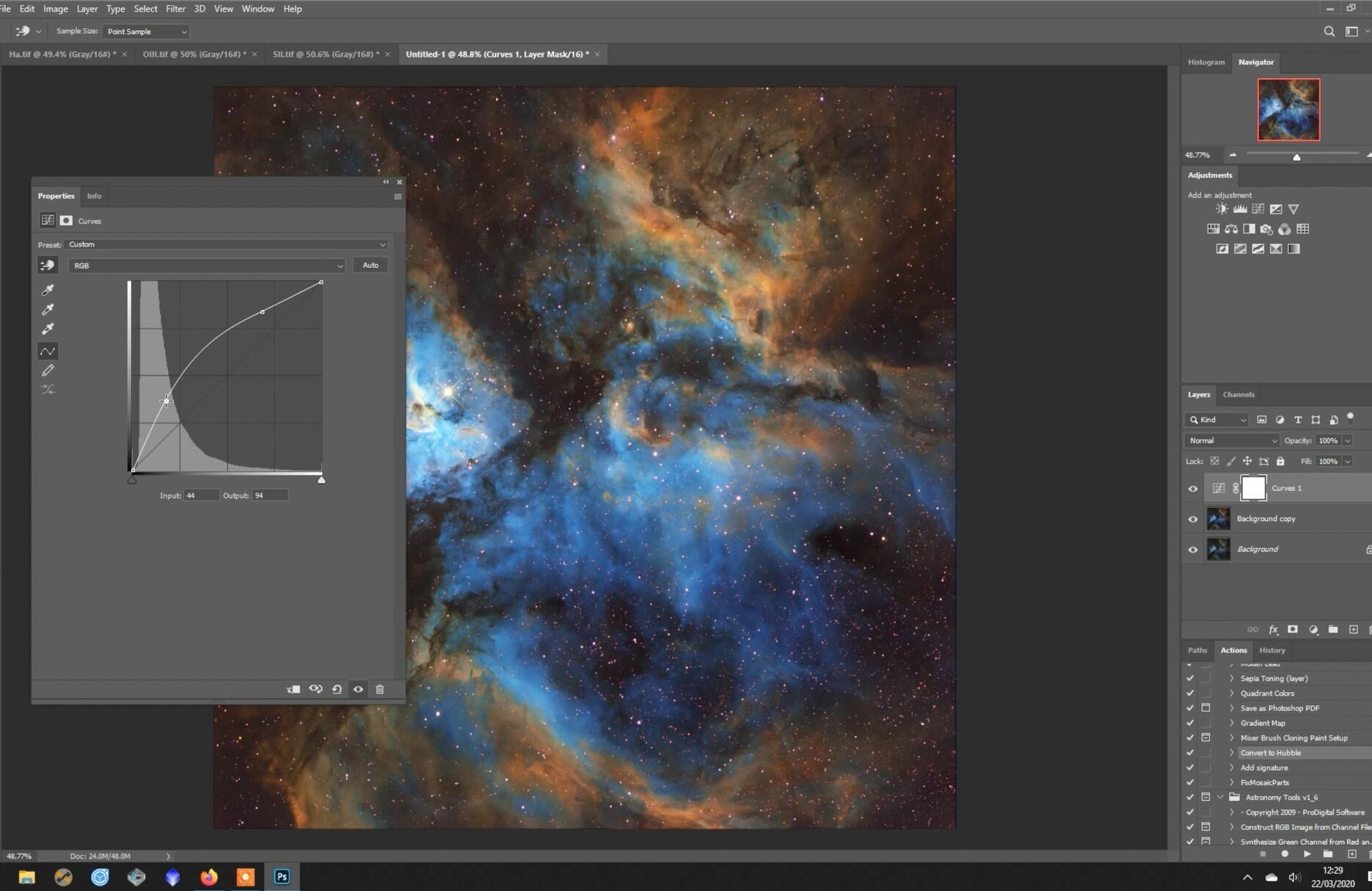
A short introduction video tutorial on how to process Eta Carina with PixInsight and Photoshop, using images obtained with the Telescope Live ASA 500N telescope located in Chile.
Note that there is a companion tutorial that uses DeepSkyStacker instead of PixInsight.
The associated dataset contains only three 10 min images per filter (Halpha, SII, OIII), for a total cost of less than 100 credits
by Peter Jenkins | 1 video | 0h 16m | Level: Standard | Software used: Fits Liberator, DeepSkyStacker, Photoshop
Eta Carina Nebula with PixInsight & Photoshop
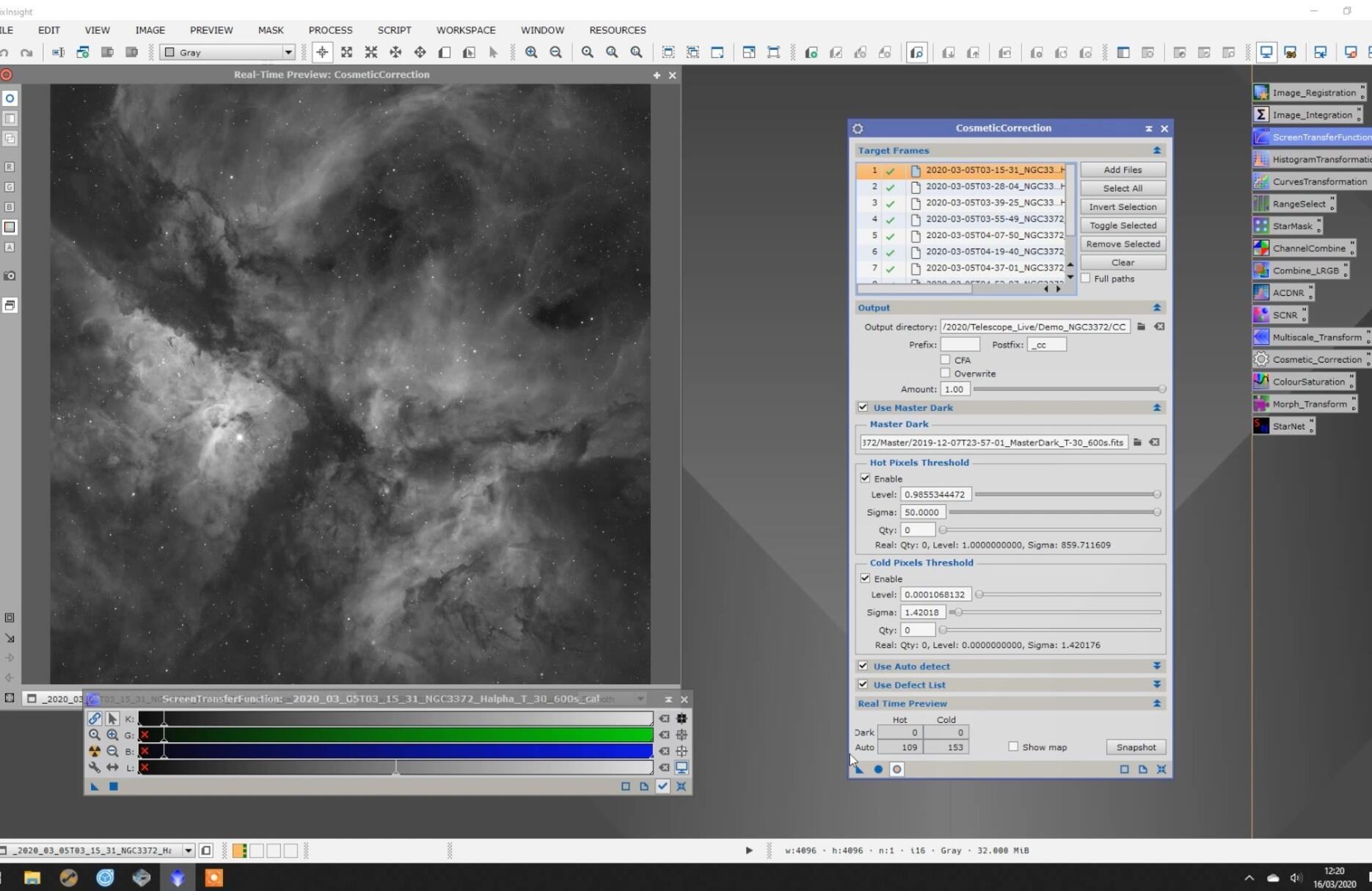
A short introduction video tutorial on how to process Eta Carina with PixInsight and Photoshop, using images obtained with the Telescope Live ASA 500N telescope located in Chile. Note that there is a companion tutorial that uses DeepSkyStacker instead of PixInsight. The associated dataset contains only three 10 min images per filter (Halpha, SII, OIII), for a total cost of less than 100 credits. The data that Peter collected using our facility at El Sauce is being made available for others to practice the techniques shown in these tutorials.
by Peter Jenkins | 1 video | 0h 26m | Level: Standard | Software used: PixInsight, Photoshop
Want to be featured in our blog? Upload your image obtained with our telescopes in the Telescope Live Gallery
